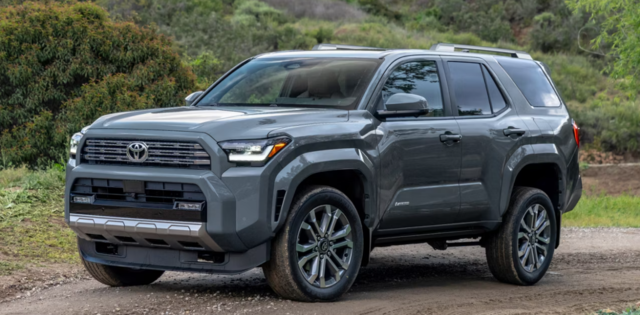Both of these systems are part of Toyota Safety Sense™ (TSS), a suite of advanced safety features to be included on virtually every vehicle produced by Toyota by Autumn 2017.
TSS is offered in the form of two packages: Toyota Safety Sense™ C (TSS-C) for compact vehicles and Toyota Safety Sense™ P (TSS-P) for midsize and large vehicles. TSS-C offers the Pre-Collision System, while TSS-P offers the Pre-Collision System with an additional Pedestrian Detection function.
Advanced safety systems like these can enhance your capability and control behind the wheel, but only if you understand how to use them. Here’s a quick breakdown of what they are, how they work, and why they’re so important.
What are the Pre-Collision System and Pedestrian Detection?
Toyota’s Pre-Collision System is a safety system designed to reduce the possibility or severity of frontal collisions by warning drivers of impending crashes with vehicles ahead.
The system helps you avoid a potential frontal collision in certain situations by alerting you with audio and visual warnings, and may automatically activating brake assist. If you do not apply your brakes and the system determines that a collision with the preceding vehicle is extremely high, it may automatically apply the vehicle’s brakes without your input.
TSS-P equipped vehicles also include Pedestrian Detection, an additional feature that uses the in-vehicle camera to help drivers detect pedestrians in certain conditions.
How do they work?
TSS-C’s Pre-Collision System uses an in-vehicle camera and laser to help detect the vehicle in front of your vehicle.
If the system determines that the possibility of a frontal collision with that vehicle is high, you will hear a beeping sound and a visual warning will appear on your dashboard’s multi-information display. These audio and visual alerts should prompt you to take evasive action and brake.
If you notice the hazard and brake, the system may provide additional braking force using Brake Assist. If you do not react to the audio and visual alerts within a set time, and the vehicle speed is between 10 and 80 km/h, the system may automatically apply your vehicle’s brakes, reducing its speed to help lessen the impact and in certain cases avoid the collision.
Automatic braking may reduce vehicle speed by up to 30 km/h for potential collisions with a vehicle. If auto-braking occurs and brings your vehicle to a complete stop, the system retains brake pressure for approximately two seconds. The driver of the vehicle must then determine whether the brake or gas pedal application, or neither, is appropriate for the conditions.
If your vehicle is equipped with TSS-P, the Pre-Collision System uses an in-vehicle camera and front-grille-mounted, millimetre-wave radar to help detect the vehicle ahead. Alerts and automatic braking are designed to function between speeds of 10 and 180 km/hr, and the automatic braking may reduce your vehicle’s speed by up to 40 km/hr.
TSS-P’s Pre-Collision System also includes Pedestrian Detection. In certain conditions, this feature may help detect a pedestrian in front of your vehicle based on the size, profile and motion of the detected pedestrian. Just as if the system detected a potential frontal collision with another vehicle, you’ll be alerted with audio and visual signals and pressure may be automatically applied to your brakes.
Why are they so important?
In its first-ever study of features like these, the Insurance Institute for Highway Safety (IIHS) found that vehicles equipped with collision warning systems and automatic braking—both included in Toyota’s Pre-Collision System—are far less likely to rear-end other vehicles. According to U.S. data, systems with automatic braking could reduce this type of collision by an average of 40 percent, while collision warning systems could cut them by 23 percent.
In circumstances where these systems can’t prevent a collision, the study found that the brake assist feature can still prevent injuries by reducing the vehicle’s speed and lessening its impact.
When you consider the number of pedestrians killed on roadways each year, the Pedestrian Detection feature included in vehicles with TSS-P is equally important. According to statistics provided by IIHS, 4,884 pedestrians were killed and another 65,000 were injured due to motor vehicle crashes on public roadways in the United States in 2014. The good news is, IIHS estimates suggest that vehicles equipped with systems like these could mitigate or prevent up to 65 percent of single-vehicle collisions with pedestrians in the U.S.
The TSS Pre-Collision System is designed to help avoid or reduce the impact speed and damage in certain frontal collisions only. The Pedestrian Detection system is designed to detect a pedestrian ahead of the vehicle, determine if impact is imminent and help reduce impact speed. It is not a substitute for safe and attentive driving. System effectiveness depends on many factors, such as speed, size and position of pedestrians, driver input and weather, light and road conditions. Please see toyota.ca, your local Toyota Dealer or Owner’s Manual for details.





